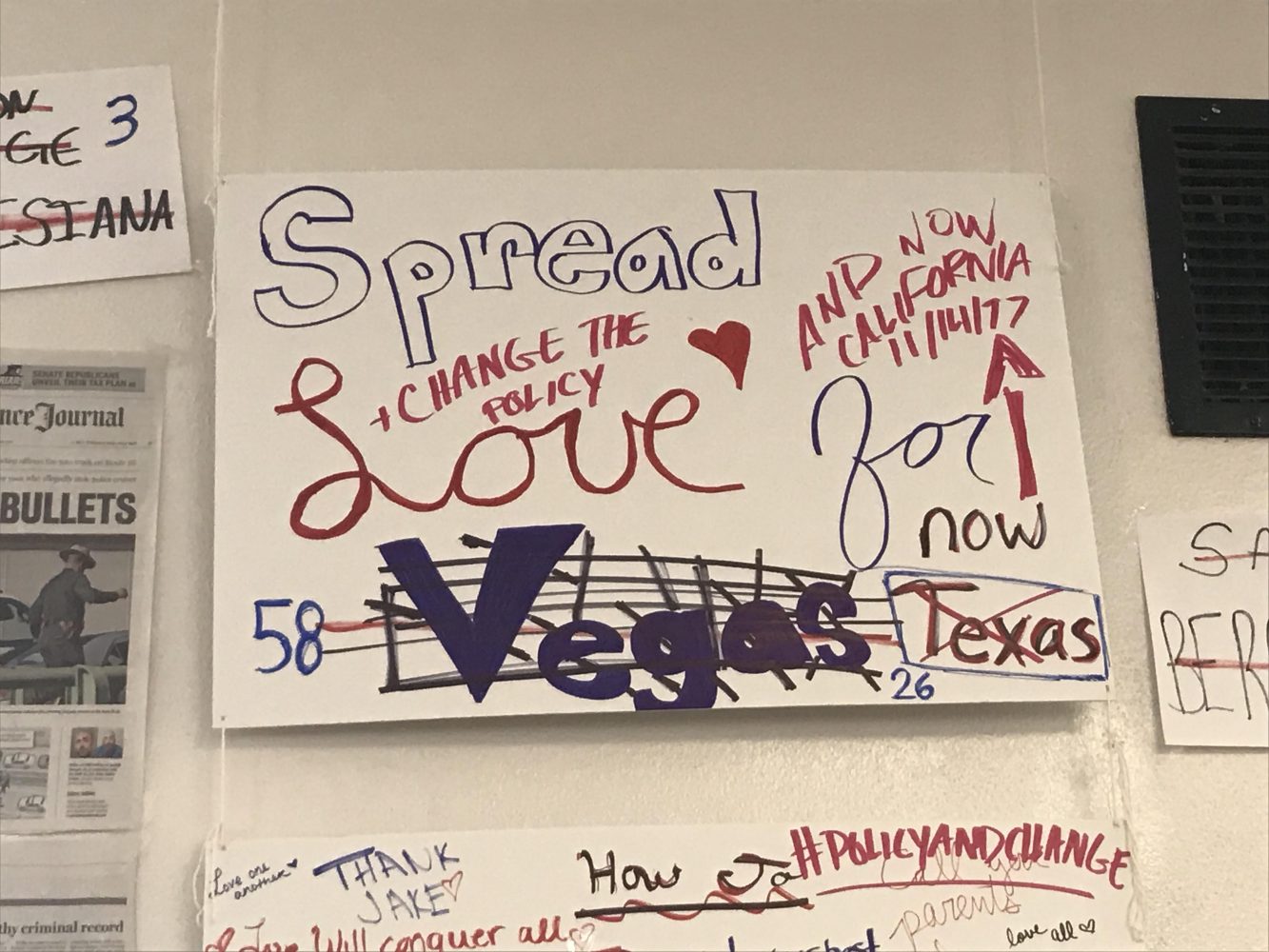In the lobby of the Fine Arts Center is a visual reminder of some most notorious shootings that have affected the nation in modern history.
- Edward Clarke, a junior theater major, began the wall, though he does not want to take credit for the display.
“It’s less about wanting credit for the art and more [about] letting the impact of the art speak for itself without a ‘who did this?’” he said. He began the wall after the Las Vegas shooting as a way to spread love for Vegas.
“When the Las Vegas shooting happened, I was pretty disturbed and upset,” he said. The shooting had a deep effect on him and he wanted to do something about it.
The idea for the wall came after he had tried to stand outside the Memorial Union with a sign that read “spread love for Vegas.”
After only reaching a limited number of students passing by that day, he decided to hang the signs up in the lobby of the FAC where he thought there’d be a lot more foot traffic. Along with that sign is another one on how to spread love where students have written things such as call your parents, tell people you love them, hug people and carry out other acts of kindness. Added on to the sign by the originator is ‘why do we forget?’
The main point of the wall is to be a reminder of what has gone on in the world.
“[I thought] how can I get people to realize that we are forgetting these events, these people and the consequences of forgetting,” he said. Thinking about the other shootings that needed to remember, Clarke wrote them out and put them up on the wall. He then crossed out the names and wrote the number of people who were killed.
About a month after the Las Vegas shooting, the church shooting in Texas took place. In going to add that to the wall, someone had already crossed out Las Vegas on the ‘Spread Love for Vegas’ sign and added Texas. The Northern California shooting that occurred this past Tuesday is also already up on the wall.
The response for the wall is big. J. said that he has seen a lot of people stop and stare at the wall, while some take pictures. He is hoping that it will evoke something in people, and it is doing just that as discussions are taking place about it.
Students in the FAC see this wall every day. Catia Ramos, a senior theater major, said that we are desensitized as a generation.
“We have to look at it every day for us to be impacted enough to do something,” she said.
Junior criminology and psychology major, Jody Hoffberger, added that visual representations are a good way to remind people.
“Visual representations are key to having people remember things,” she said.
“Conversation is so important,” the wall’s creator said. “But I think action is more important and I think that is what art does.”
He added that conversation and bringing the discussion can be your action and also hopes that people are inspired by the wall to have more conversations and do more art activism on campus. He is a strong believer of art activism and that there needs to be more on campus and thought this wall was a good place to start.
“I don’t want people to forget.”





